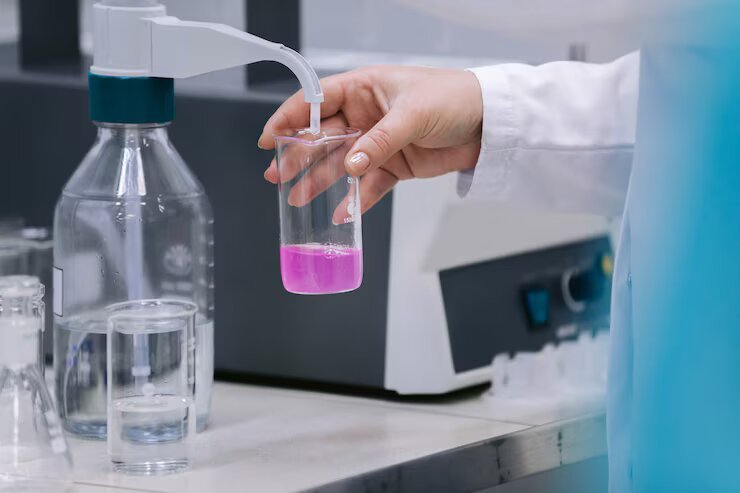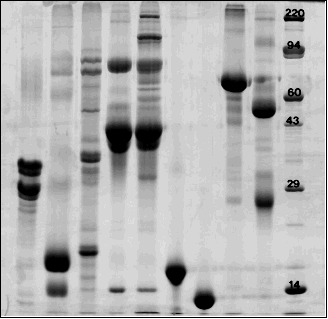Chromatography is a powerful technique widely used in biochemical analysis and biopharmaceutical research. Among the various chromatography techniques, affinity chromatography and ion exchange chromatography stand out due to their high specificity and efficiency in separating biomolecules. Understanding the key differences between these methods will help researchers choose the right technique for their experiments.
Understanding Affinity Chromatography
Affinity chromatography is a highly selective method that relies on specific binding interactions between a target molecule and a ligand attached to the stationary phase. This technique is particularly useful for isolating proteins, antibodies, enzymes, and other biomolecules that exhibit strong biological interactions.
Principles of Affinity Chromatography
The fundamental principle of affinity chromatography is based on the ability of certain biomolecules to bind selectively to a ligand immobilized on a resin or matrix. The process involves several key steps:
Binding: The sample is introduced into the column where the target molecule interacts with the immobilized ligand.
Washing: Unbound or weakly bound molecules are removed using a washing buffer.
Elution: A competitive ligand or a change in pH or ionic strength disrupts the binding, releasing the purified molecule.
Regeneration: The column is cleaned and regenerated for reuse.
Advantages of Affinity Chromatography
High specificity: Strong binding interactions minimize contamination.
High yield and purity: Effective at isolating target molecules from complex mixtures.
Scalability: Useful for both small and large-scale protein purification.
Rapid processing: Faster purification compared to other methods.
Limitations of Affinity Chromatography
High cost: Specialized reagents and ligands can be expensive.
Potential denaturation: Harsh elution conditions can affect protein structure.
Column fouling: Repeated use may cause ligand degradation, requiring frequent regeneration.
If you are looking for professional lab services to optimize your chromatography techniques, click here to find out more.
Understanding Ion Exchange Chromatography
Ion exchange chromatography (IEX) is another widely used purification technique that separates molecules based on their charge properties. This method is particularly effective for protein purification, nucleic acid separation, and other charged biomolecules.
Principles of Ion Exchange Chromatography
IEX operates based on electrostatic interactions between charged molecules and the charged resin used as the stationary phase. The process includes:
Binding: Positively or negatively charged molecules attach to the oppositely charged groups on the resin.
Washing: Weakly bound molecules are washed away.
Elution: A salt gradient or pH change is applied to disrupt electrostatic interactions and release the bound molecules.
Regeneration: The column is cleaned for further use.
Types of Ion Exchange Chromatography
Cation Exchange Chromatography (CEX): The stationary phase is negatively charged and binds positively charged molecules.
Anion Exchange Chromatography (AEX): The stationary phase is positively charged and binds negatively charged molecules.
Advantages of Ion Exchange Chromatography
High resolution: Effective separation of closely related molecules.
Scalability: Suitable for both analytical and industrial-scale purification.
Cost-effective: Lower reagent costs compared to affinity chromatography.
Reusability: Resins can be regenerated multiple times, reducing operational costs.
Limitations of Ion Exchange Chromatography
Sample preparation: Requires proper buffer optimization to maintain charge interactions.
Lower specificity: Separation is based on charge rather than unique molecular interactions.
Time-consuming: Multiple gradient elutions may be required for optimal purification.
If you need expert guidance on implementing ion exchange chromatography in your laboratory, check over here.
Applications of Affinity and Ion Exchange Chromatography
Both techniques are widely used in research and industrial applications:
Applications of Affinity Chromatography
Protein purification: Isolation of antibodies, enzymes, and recombinant proteins.
Drug discovery: Purification of drug targets and active pharmaceutical ingredients.
Biomarker research: Identifying disease-related proteins.
Food industry: Purification of specific food-grade proteins and enzymes.
Applications of Ion Exchange Chromatography
Protein separation: Fractionation of protein mixtures based on charge.
Nucleic acid purification: Separation of RNA and DNA molecules.
Water purification: Removal of unwanted ionic contaminants.
Quality control: Analyzing charge variants in pharmaceuticals and bioproducts.
If you need assistance in choosing the best method for your research, Contact us for expert consultation.
Conclusion
Both affinity chromatography and ion exchange chromatography are essential techniques in biochemical and pharmaceutical research. While affinity chromatography offers superior specificity and high purity, ion exchange chromatography provides an efficient, cost-effective alternative for charge-based separations. By understanding their differences, strengths, and limitations, researchers can make informed decisions to optimize their purification strategies.
For more details on custom chromatography solutions, click here to find out more.







